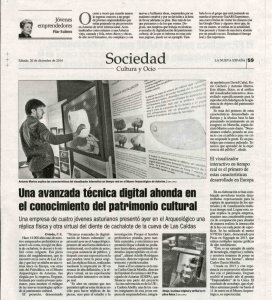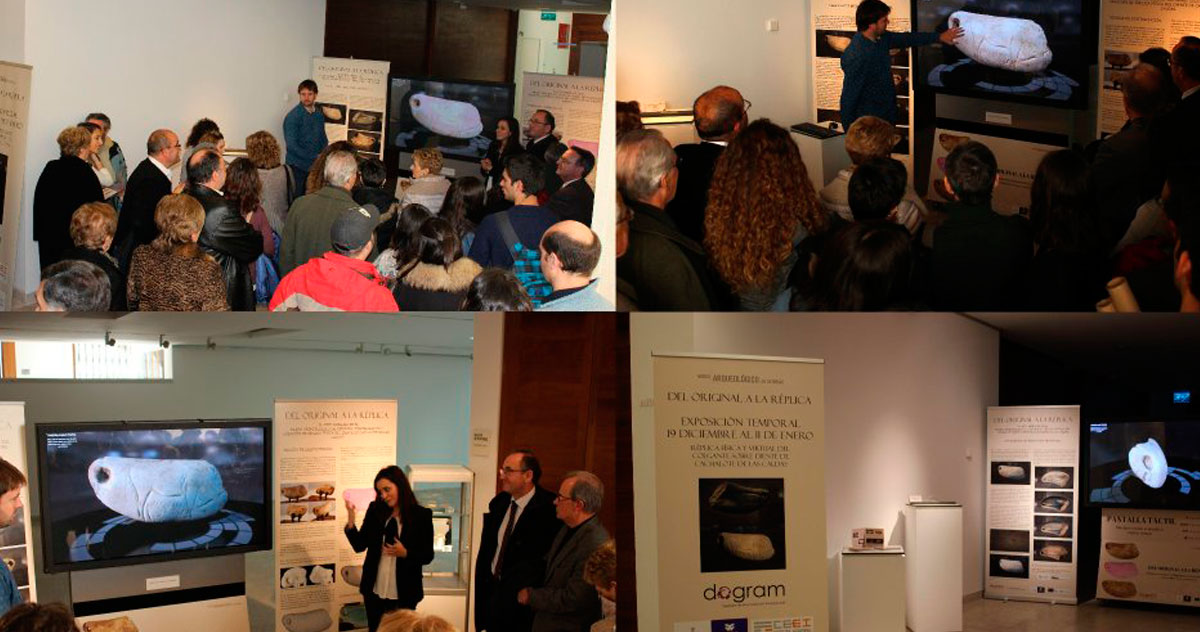Along 2014 Dogram has been carrying out the research and development Project “Advanced Methods of cultural heritage digitalization”. As quality ending for the project, we have developed, in partnership with the Museo Arqueológico de Asturias, the temporal exhibition “From original to replica”, open from 19th December 2014 to 11th January 2015.
[/vc_column_text][vc_video link=”https://youtu.be/5idry5tjKKI” el_width=”80″ align=”center” css=”.vc_custom_1521450739441{padding-top: 20px !important;}”][/vc_column][/vc_row][vc_row][vc_column css=”.vc_custom_1521121499151{padding-top: 20px !important;}”][vc_column_text]
This exhibition is focused on this magnificent magdalenian pendant made up of sperm whale tooth found at the cave “ la cueva de Las Caldas (Piñera, Oviedo), one of the most significant pieces of the Museo Arqueológico de Asturias. At this inauguration, there was a presentation event, attending D. Adolfo Rodríguez Asensio, Director General de Patrimonio Cultural and D. Carlos García Morilla, Director del Instituto de Desarrollo Económico del Principado de Asturias.

This exhibition counts on several physical replicas of this piece, carried out through 3D printing technics and made up of high definition resins. These replicas have been done both in real scale and double scale, in the way of a touch station. In addition to this, one of them has been done through a process of chromatic intonation by Beatriz García Alonso, conservative of Museo Arqueológico de Asturias, achieving a replica of very high quality.
To digitalize it, we have used a combination of photogrammetric and stereo-photometric techniques in order to reach micronmetric resolutions and reproduce all the details, even the finest of the piece relieve: a bison on the reverse side and a beluga or sperm whale on the front.

An interactive virtual replica is also showed by using an interactive system to see it in real time on the Nvidia Optix engine. This display screen developed during the project allows see the results of the techniques to catch the appearance of the materials, allowing the simulation and reproduction completely unimpeachable of the original elements real appearance.
The use of these replicas allows the specialists and technicians identify details when carrying out technical studies without handling directly the original pieces, allowing also to know in all detail and interact with such appreciated elements of the cultural heritage.

